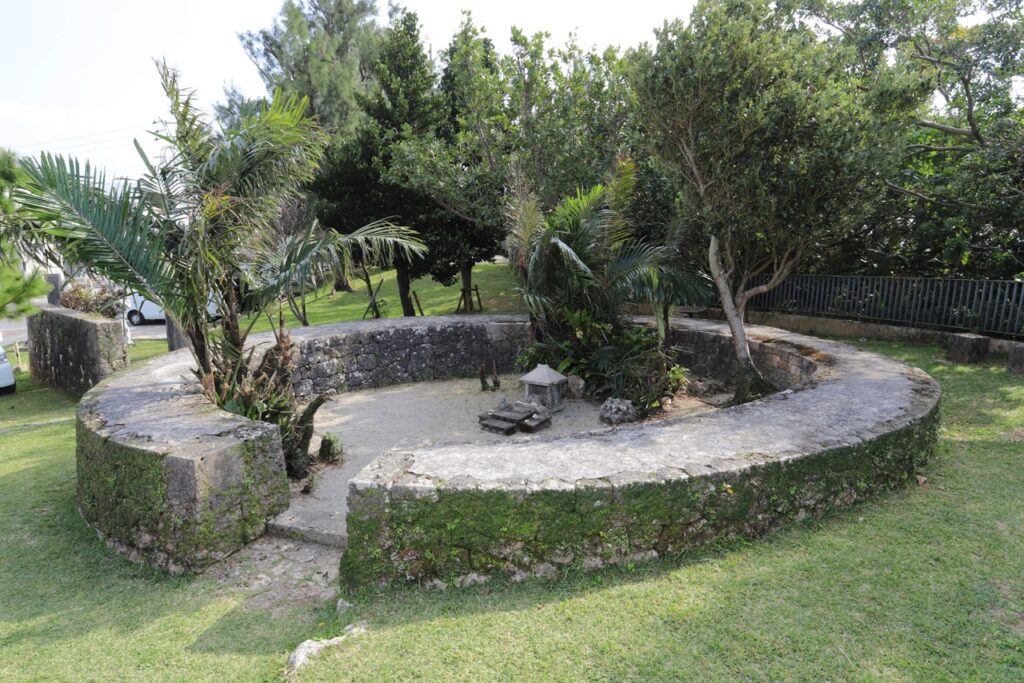Praying for Rain

Photo: TARUMI Kengo
In Okinawa, typhoon and drought are two natural phenomena that cannot be avoided, no matter how much scientific progress is made.
In our modern lives, 50 years after the war, we are still repeatedly troubled by these phenomena. Before Okinawa’s return to Japan, when the water and sewage system was still under construction, people relied on water from the muragā (village’s shared well), which led to great suffering in the event of a drought.
I think it was around 1960 when Okinawa experienced another long and extensive drought. In order to solve the problem, water was delivered from the island of Yakushima or somewhere nearby on passenger liners that connected Okinawa and Kagoshima.
The US military government saw it as an opportunity to show off their power, so they developed an air force-led operation to create artificial rainfall. Fighter jets took off from Kadena Air Base and scattered silver iodide (Agl) inside the clouds.
However, there was no rainfall. The US military, possessing the world’s most advanced technology and military power, couldn’t make artificial rain — not even a single drop. Needless to say, it ruined their authority.
Therefore, people living in the Ryukyu Arc still believe that when there’s no rain, the only way is to pray to the gods. Rather mysteriously, it is also said to rain when the drought control council declares a suspension of water supply.

Photo: KANO Tatsuhiko
These prayers differ between islands and regions, but there is a common ritual. Accompanied by the village officers, some villagers act as gods and goddesses and go to an utaki (sacred place). Once there they place a bottle filled with water in the middle of the garden, sing a prayer song and dance as they move in a circle around the bottle. The gods or goddesses would then soak Formosa palm leaves and scatter the water towards the sky.
The various prayer songs share the following repeating lyrics:
Ame hoshiyani (We need rain)
Mizu hoshiyani (We need water)
Ame orochitamafure (Please let the rain fall)
Ibu orochitamafure (Please let the water come down)
This year (1998), many prayer songs were heard in Miyako Island and Ishigaki Island throughout the summer. According to a newspaper article, kuichā (dance conducted by a group of young women and men) was performed as they prayed for rain.








































































































































































































































